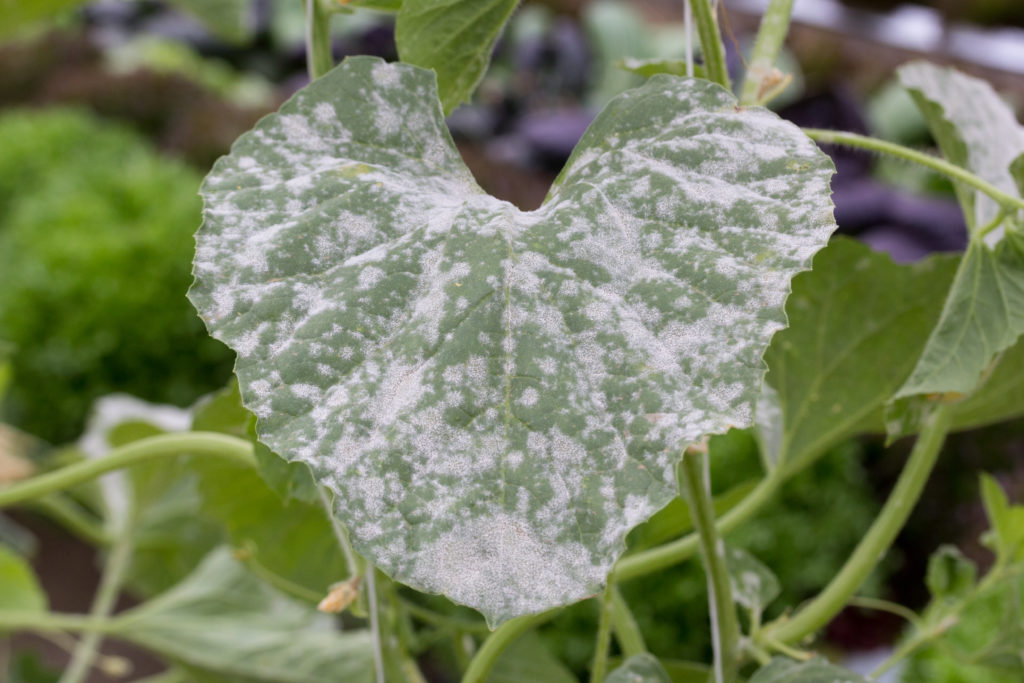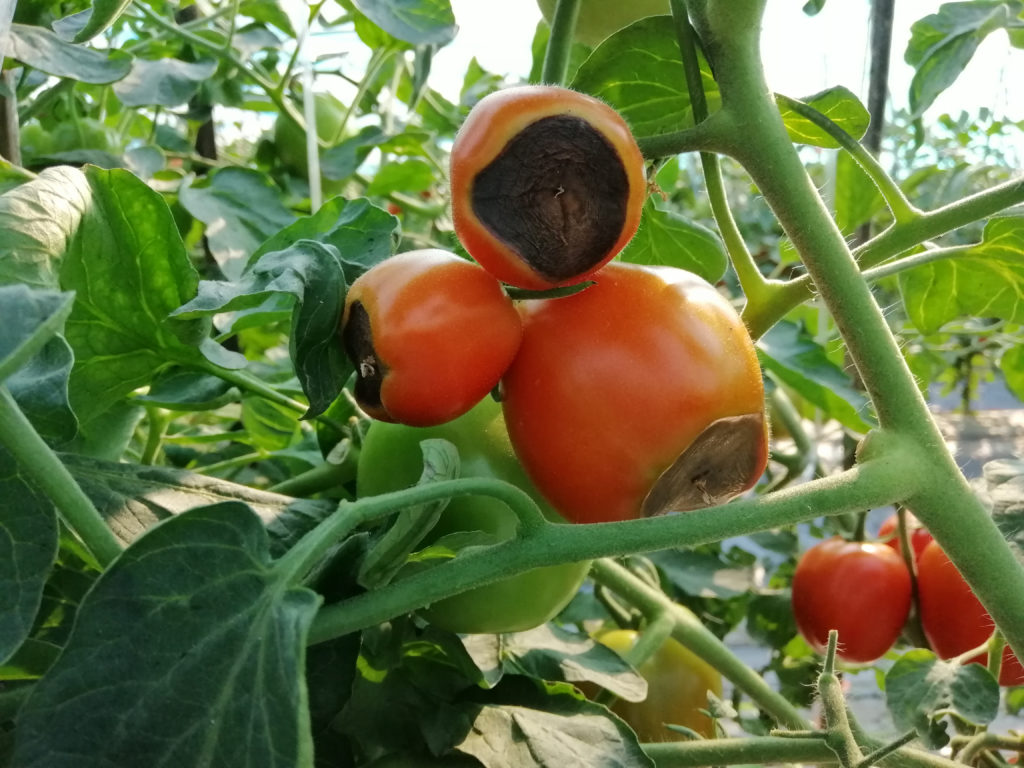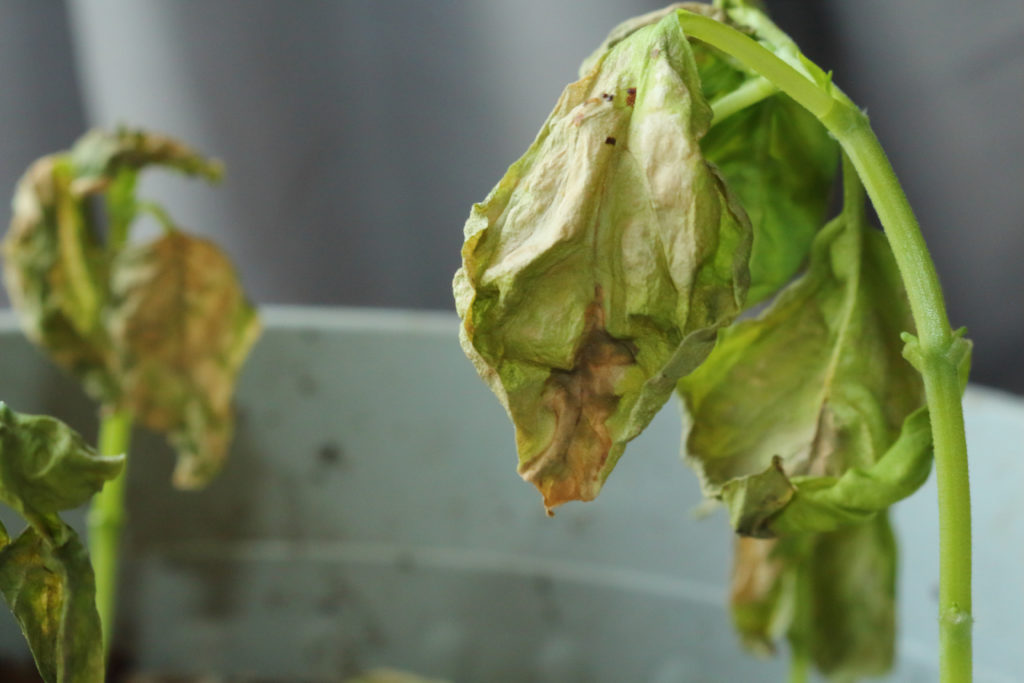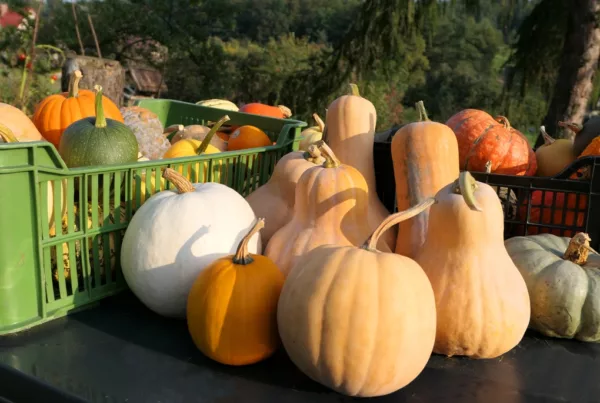One of the benefits of Square Foot Gardening is that plants tend to be much healthier than those grown in traditional row-planted gardens — when plants are given the optimal conditions to grow, they are more resistant to stress and, as a result, less vulnerable to pest and disease issues. However, we all know that every now and then something less-than-desirable sneaks into our gardens, in spite of our best efforts and diligent care.
We’ve already talked about how to deal with some common pests in our blog post “DIY Organic Pest Sprays,” so now it’s time to talk about some of the more common plant diseases and how to treat them.
Why are Square Foot Gardens more resistant to disease?
We touched on it above, but there are really several reasons why Square Foot Gardens tend to have less disease issues than traditionally planted gardens:
- Mel’s Mix™ gives plants what they need to be strong. When plants are strong and healthy, they are less vulnerable to pest and disease issues. So when they are planted in Mel’s Mix™, an ideal environment for plant growth and vigor, they are off to a great start from the very beginning.
- Mel’s Mix™ is relatively sterile. The three ingredients in Mel’s Mix™ (blended compost, coarse vermiculite, and peat moss) are sterile and free of viruses, bacteria, and spores that are common in traditional garden soils.
- Biodiversity is inherent in SFG. In Square Foot Gardening, various plants are interspersed within one bed, with tomatoes growing next door to okra or squash, for example. This biodiversity means that a disease that hits your squash plant has a much lower risk of overtaking (and taking out) your entire garden or planting bed.

3 Common Plant Diseases and How to Treat Them
While there are many possible diseases you can run across in your garden, there are a few that tend to be the most common. If you’ve been gardening for any length of time, you’ve likely experienced at least one of these plant diseases.

- Blossom end rot: Tomatoes, peppers, melons, and eggplant sometimes develop a sunken, rotted spot at the end where the blossom was — a telltale sign of aptly-named blossom end rot. This disease is caused by several different factors, two of which (calcium deficiency in the soil and too much fertilizer in the soil) are not likely to be present in SFG. The third, however — soil moisture fluctuations — can exist in any garden. Your goal is to make sure you water your plants consistently to avoid the drought and overwatering conditions that can lead to blossom end rot in the first place.
- Verticillium wilt: This is a serious disease caused by a soil fungus, and you can spot it by observing curled and wilted leaves that often turn yellow or red before turning brown and dropping off. Veggies like tomatoes, peppers, cucumbers, eggplant, potatoes, pumpkin, and watermelon are particularly susceptible, but a wide range of other vegetables can also be impacted by this disease. Once your plant has verticillium wilt, it cannot be cured and will ultimately kill the plant — remove the entire plant and dispose of it in the trash can.
- Powdery mildew: Powdery mildew is one of the most common and easily identified of all plant diseases, and most vegetable plants can get it. If you’ve seen white or gray mottled spots on leaves, it’s most likely powdery mildew, and it’s very common in hot, dry areas of the country as well as in locations with high humidity. Plus, if your garden has poor air circulation, it becomes a breeding ground for this disease. When you spot powdery mildew, remove all infected leaves and dispose of them in the trash. Selectively prune your plants to increase air circulation and, if you need to use a chemical control, organic neem oil spray can be very effective.

General Tips to Keep Your SFG Disease-Free
Aside from individually treating the occasional disease in your garden, is there anything you can do to avoid them in the first place? Absolutely!
- Choose disease-resistant plant varieties. Do some homework on the varieties of vegetables you’d like to plant, and only plant those that are resistant to common diseases. Many modern tomato varieties, for example, are resistant to verticillium wilt, and you’ll find that information by looking for the letter “V” after the variety name on the tag. If you cannot find a variety that is resistant to a particular disease, then aim to plant those that are labeled as “early maturing” to allow the plant to produce a crop before it has time to become infected.
- Keep your tools clean. If you’re using tools like pruners or clippers to harvest your tomatoes and peppers, be aware that viruses, bacteria, and fungi can pass from one plant to another via your hand tools. A good rule of thumb is to have some isopropyl alcohol on hand to give your tools a quick sterilizing wipe down in between cuts.
- Avoid adding diseased plants to your compost pile. While most pathogens cannot survive the heat of the compost pile, there’s evidence that verticillium wilt can. And then there’s the matter of “How hot does the compost pile need to be to kill off most pathogens?” The answer is 150-180 degrees, and many home compost piles don’t reach that heat. So, we don’t recommend putting any diseased plants into your compost pile — why risk those diseases infecting next season’s garden? Bag them and throw them out.
- Rotate your crops. Plant disease can linger in a square within your grid if you replant the same crop twice in a row in the same space. To avoid this, simply plant a different crop than the one you just removed within that square.



